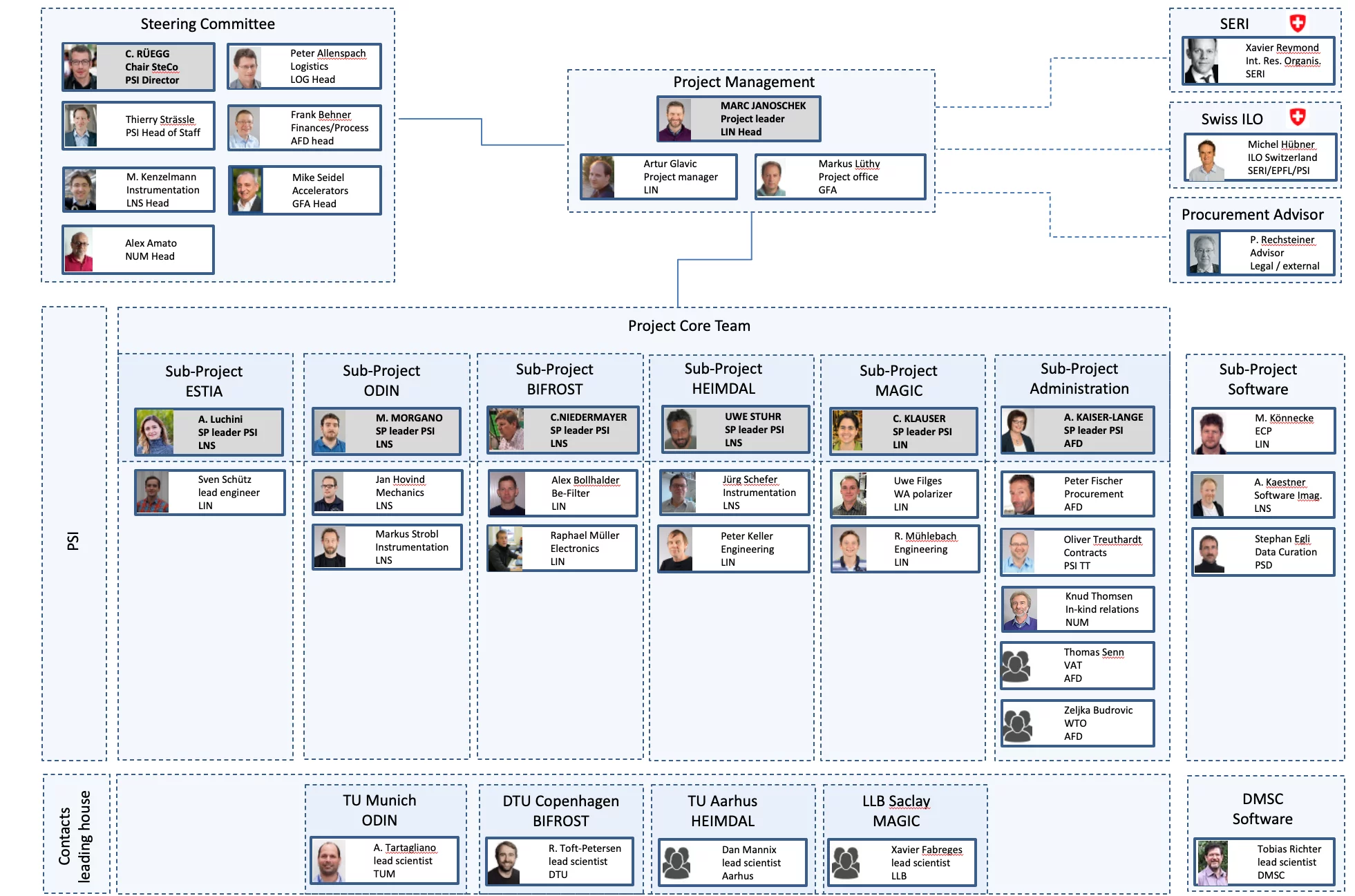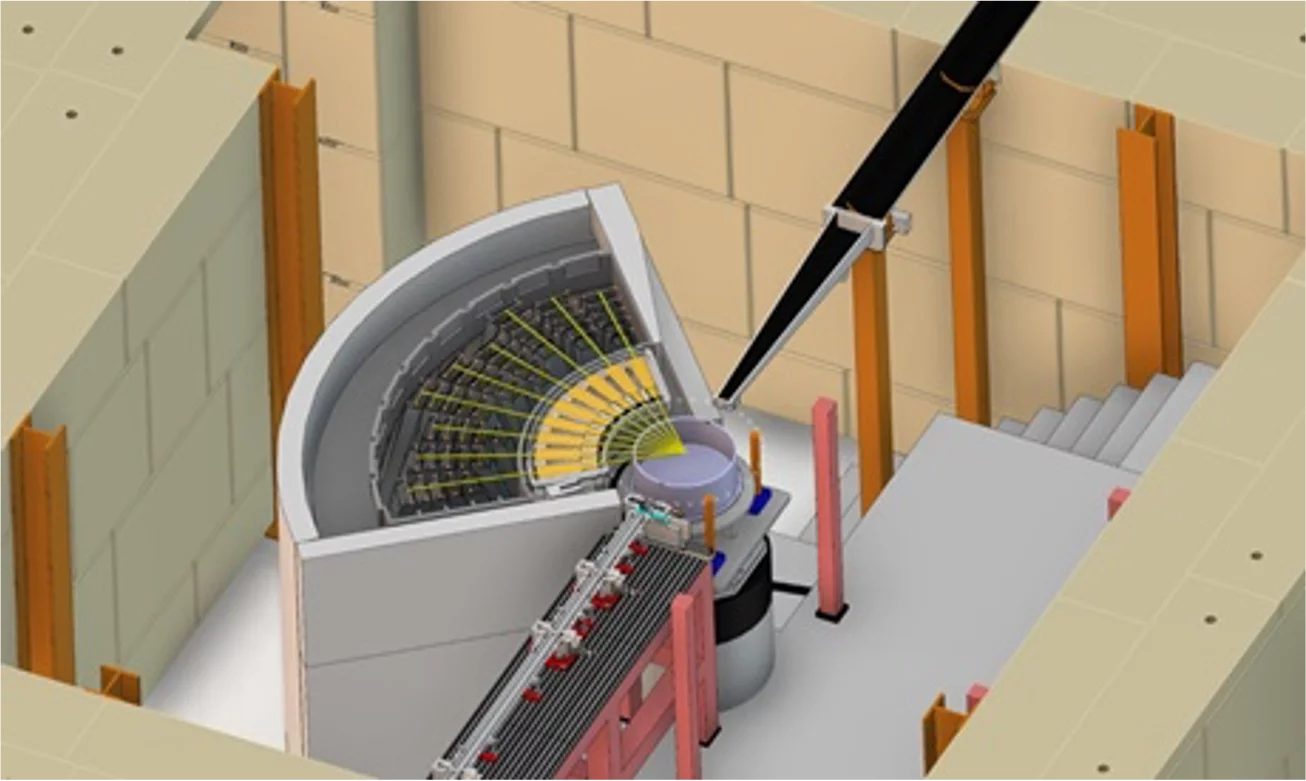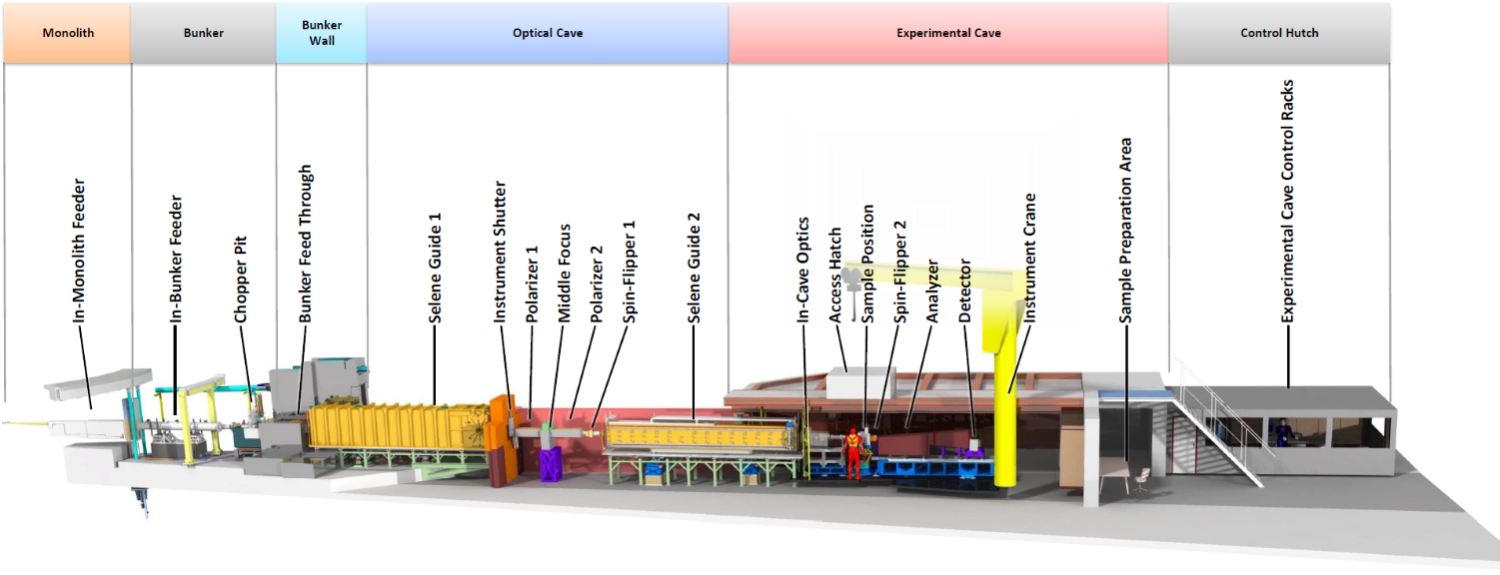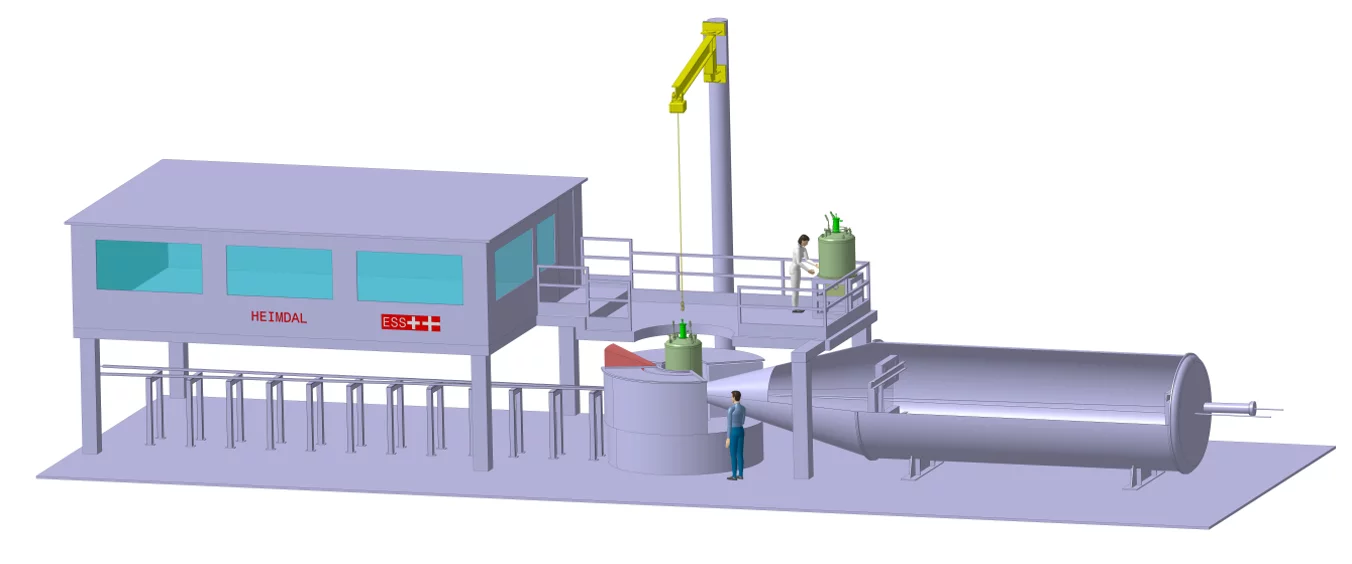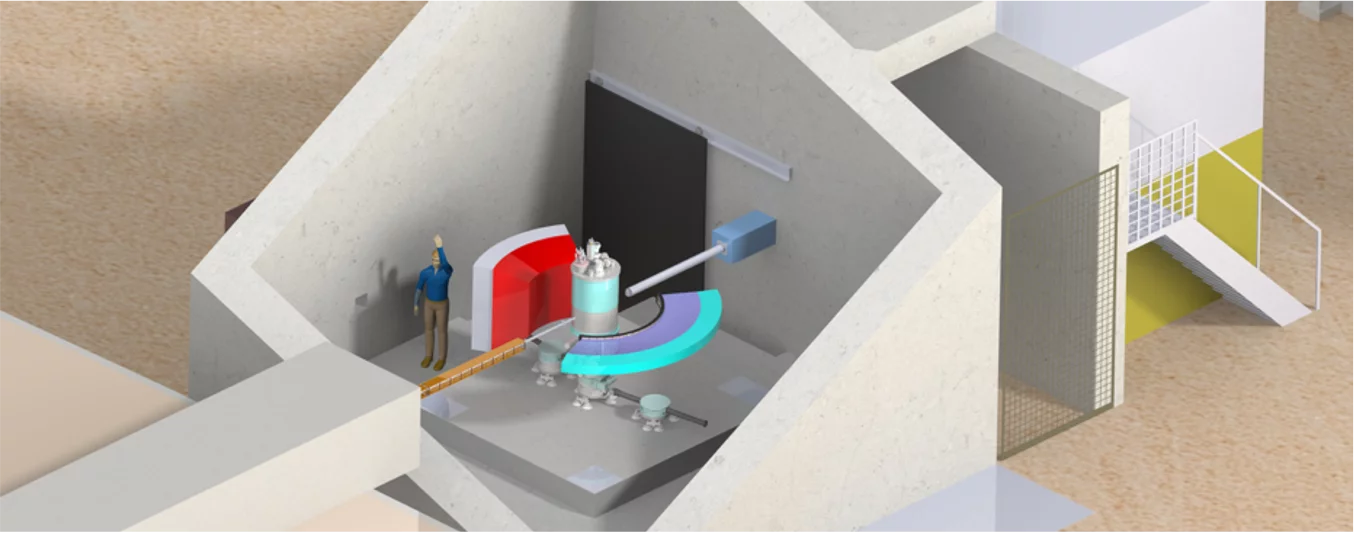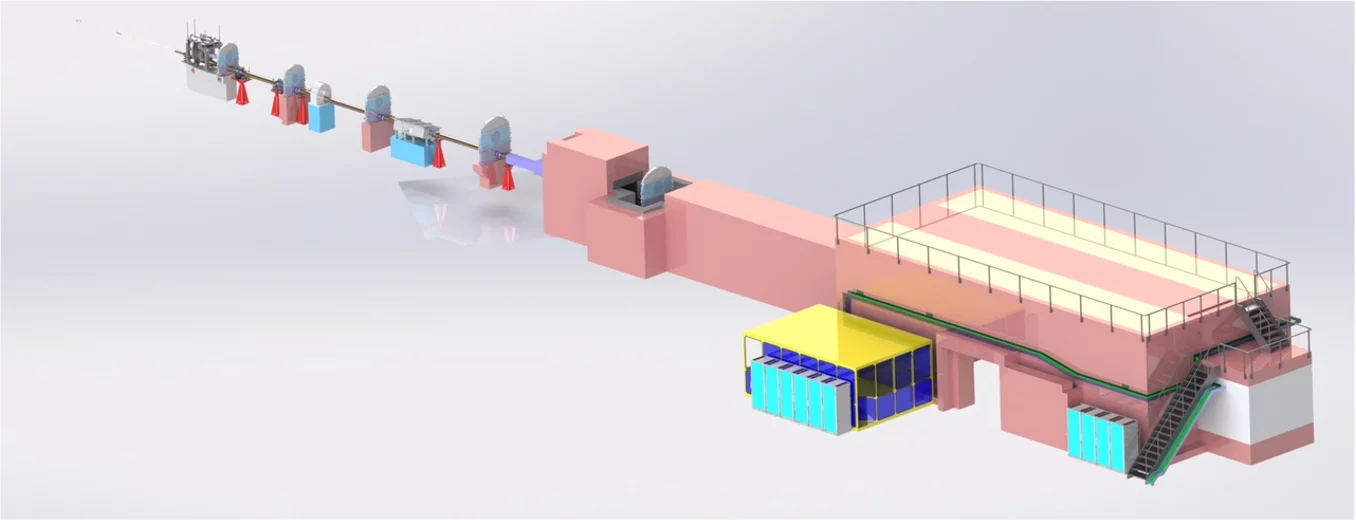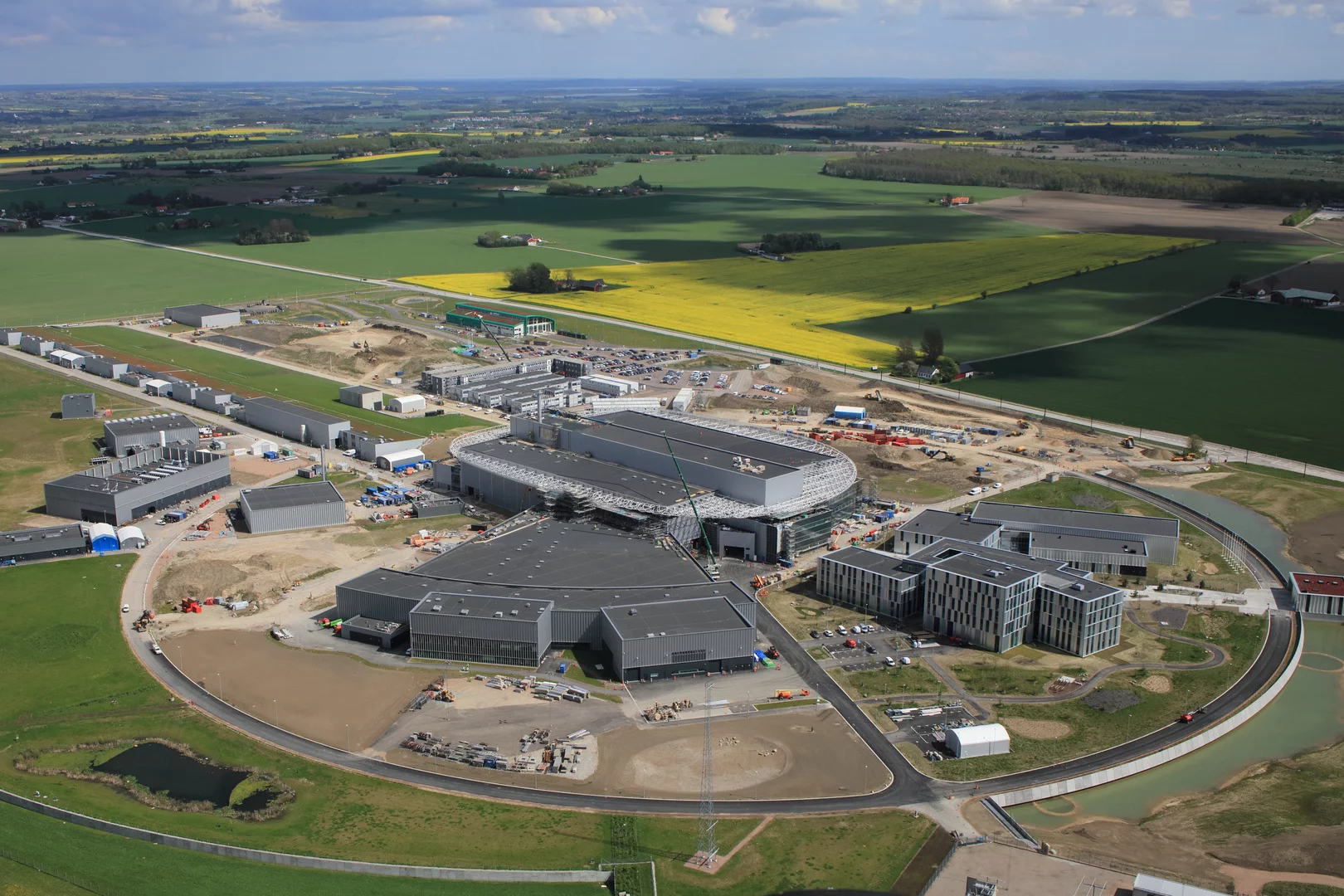PSI-ESS Project
The European Spallation Source (ESS) is currently under construction in Lund, Sweden and is set to become the most powerful neutron source in Europe and world-wide. The PSI-ESS project is delivering state-of-the-art contributions to five instruments at ESS. Notably, PSI is in charge of the pioneering reflectometer ESTIA for ESS and contributes to four more instruments, together with other European partners (see also Figure). The project is funded through a substantial in-kind contribution by the Swiss State Secretariat for Education, Research and Innovation (SERI). Swiss involvement in one third of the total of 15 instruments currently being constructed is an excellent return for a 3.9% contribution to the overall cost of ESS construction. In turn, this project will secure access to world-leading neutron instrumentation for the Swiss research community.
Project Organization
LIN is tasked with the management of the overall project that is carried out in a matrix organization, which takes full advantage of expert know-how in instrument design and construction in LIN and LNS within NUM but also of engineering and administrative competences in other divisions of PSI. The project organigram is shown below.
Project is lead by Marc Janoschek who is supported by project manager Artur Glavic.
Description of Swiss Instrument Contributions
The PSI-ESS project is delivering contributions to five pioneering instruments at ESS, which are detailed in the following. In addition, PSI is also delivering in-kind contributions for software and controls.
BIFROST is an indirect-geometry ToF spectrometer currently under construction at ESS, and is being built by a consortium consisting of the Technical University of Denmark, Copenhagen University, IFE, LLB, and PSI. BIFROST utilizes a variant of the CAMEA concept and promises to make best use of the unique brightness and long-pulse structure of ESS. By investigating low-energy dispersive dynamics in single crystals, BIFROST will enable explorations of the intricate physics of magnetism and superconductivity, with applications in IT, energy materials of tomorrow, geoscience, and functional materials.
More information can be found here: https://europeanspallationsource.se/instruments/bifrost
The subproject leader for the BIFROST instrument at PSI is Christof Niedermayer.
ESTIA is a fully polarized reflectometer with vertical sample geometry, currently under construction at ESS. It is the only instrument fully developed by PSI at ESS, and will be one of the first ESS instruments, scheduled to start its user operation in 2024. In addition to a large q-range coverage and full polarization analysis, the instrument will feature a unique, truly focusing neutron guide that will allow reflectometry from tiny samples (1 mm²). This method provides a high penetration depth, sensitivity also for light elements, allows for contrast variation by isotope substitution, and probes magnetism. The science case of ESTIA includes magnetism, ion diffusion, soft matter, and biological states on surfaces and interfaces.
More information can be found here: https://europeanspallationsource.se/instruments/estia
Here a flight through the ESTIA 3D model is available: ESTIA movie
The lead scientist and lead engineer for the ESTIA instrument are Alessandra Lucini and Sven Schütz, respectively.
HEIMDAL is a hybrid diffractometer whose full scope includes both a cold and thermal guide, and detectors for diffraction, small-angle scattering and imaging. It is designed for studying advanced functional materials featuring multiple length scales. It is being built by a consortium consisting of Aarhus University, IFE, and PSI. The strength of HEIMDAL will be the operando study of functional materials with a high time resolution using diffraction and simultaneous SANS/imaging, thereby enabling combined studies at the nano- and microscale.
More information can be found here: https://europeanspallationsource.se/instruments/heimdal
The subproject leader for the HEIMDAL instrument at PSI is Uwe Stuhr.
MAGIC is a fully polarized single-crystal diffractometer, being built at ESS by the Forschungszentrum Jülich, LLB, and PSI. It is designed for the study of magnetic order and correlations in small samples. It uses neutrons from the thermal moderator and double-elliptic neutron guides. It will feature large detectors covering 0.8 sr for half-polarized experiments, and 0.2 sr for fully polarized experiments. A critical component is the polarizing supermirror analyser using FeSi that is currently being built at PSI.
More information can be found here: https://europeanspallationsource.se/instruments/magic
The subproject leader for the MAGiC instrument at PSI is Christine Klauser.
ODIN is a ToF imaging instrument with tunable wavelength resolution and with the highest flux of all imaging instruments worldwide, and is being built at ESS in collaboration with the Technical University of Munich (TUM). It is designed as a multi-purpose imaging instrument that will facilitate all thermal-neutron imaging techniques at highest efficiency. Flux, bandwidth and resolution conditions can be tuned widely to fit the needs of specific measurements and techniques. This will support conventional attenuation contrast imaging at high temporal and spatial resolution as well as diffraction contrast and dark-field contrast imaging with polarized and unpolarized neutrons. The instrument will cover all established uses of thermal/cold neutron imaging science, which will benefit from the significantly higher performance, particularly in the regime of Bragg edge imaging of crystalline materials, and further extend neutron imaging into areas such as engineering, magnetism, and soft matter, especially for in-situ time resolved studies, which are limited by flux today.
More information can be found here: https://europeanspallationsource.se/instruments/odin
The subproject leader for the ODIN instrument at PSI is Manuel Morgano.
ESS Construction Site in Lund
The construction site of ESS in Lund, Sweden is making steady progress. Above we show an arial view of the site from May 2021. Recent construction site updates can always be found here: https://europeanspallationsource.se/site-weekly-updates


